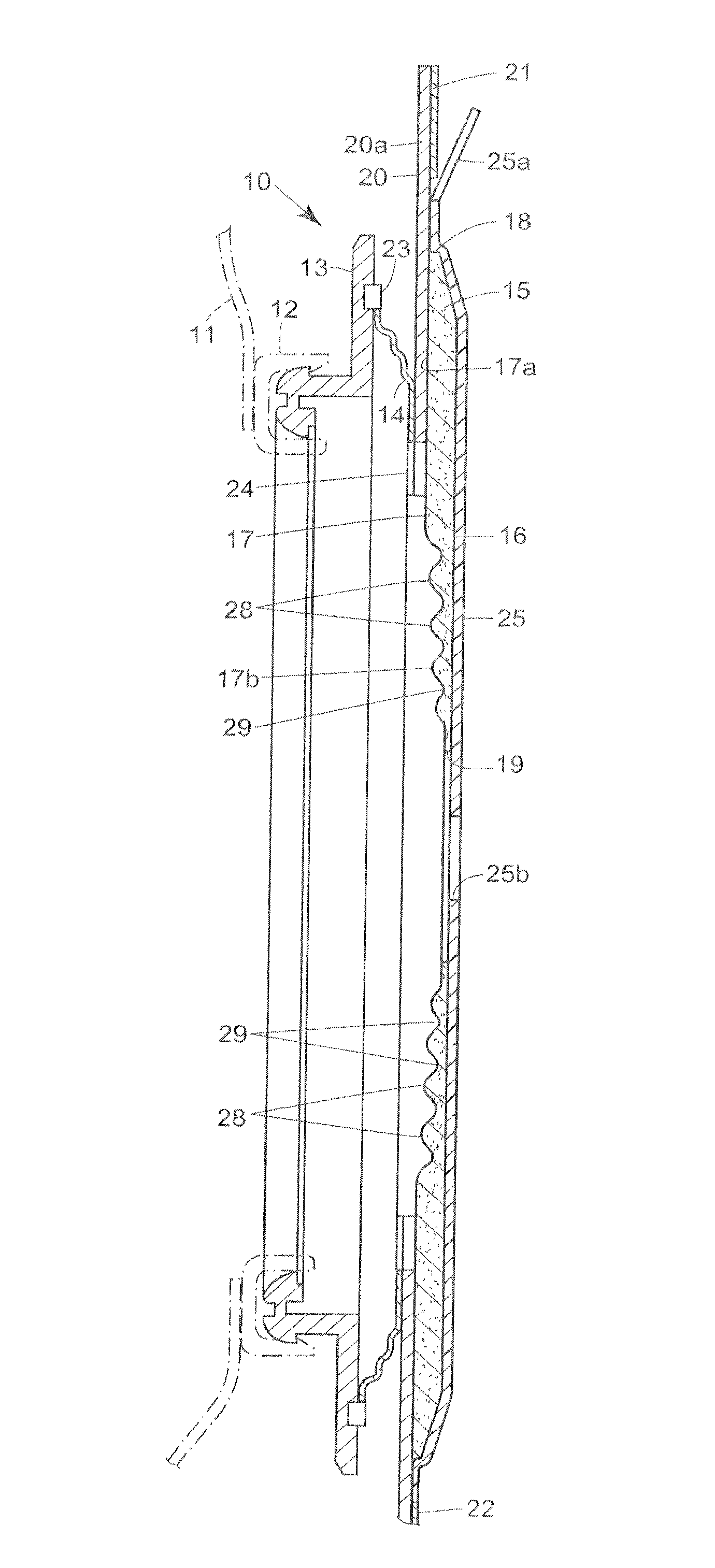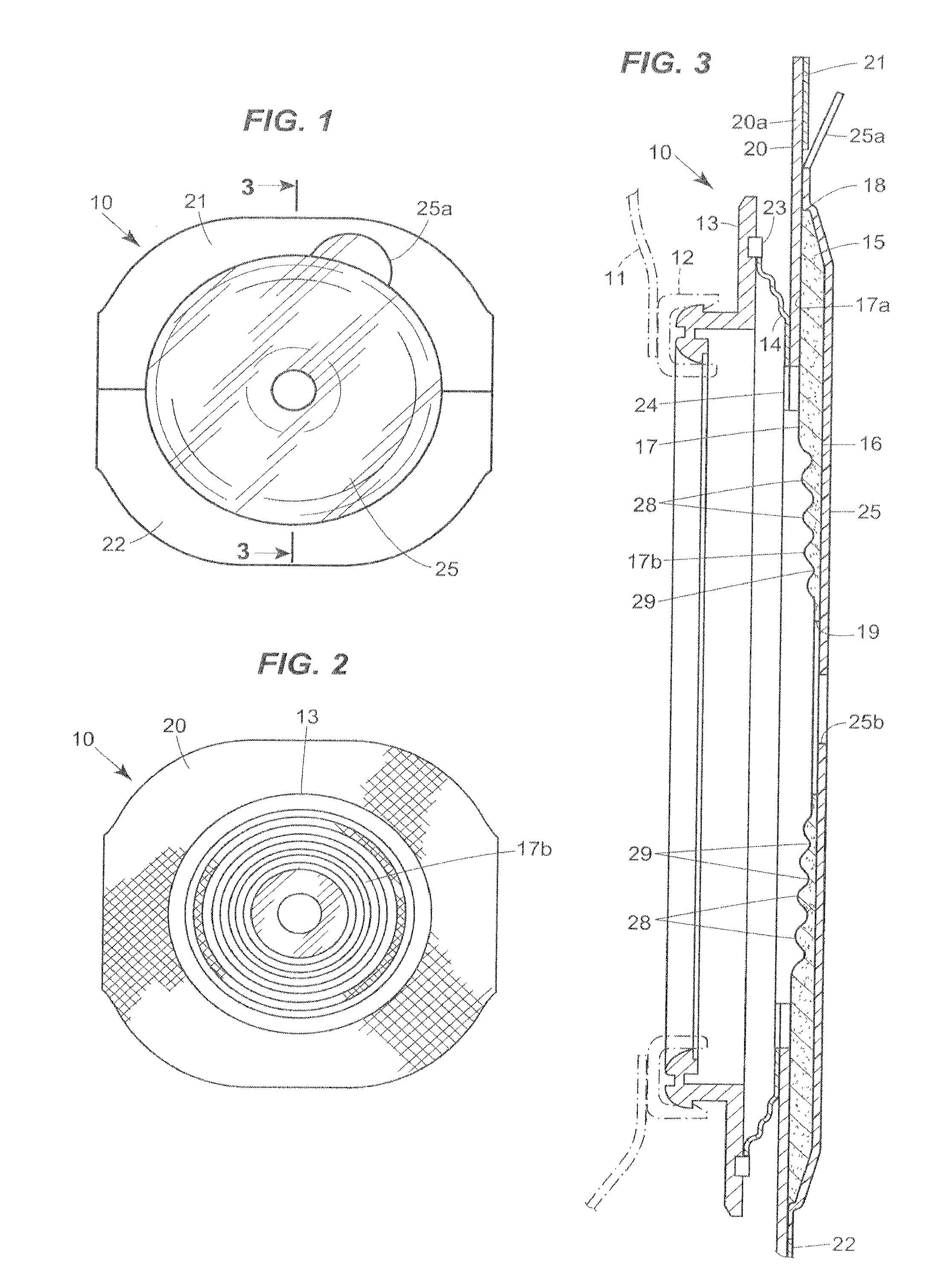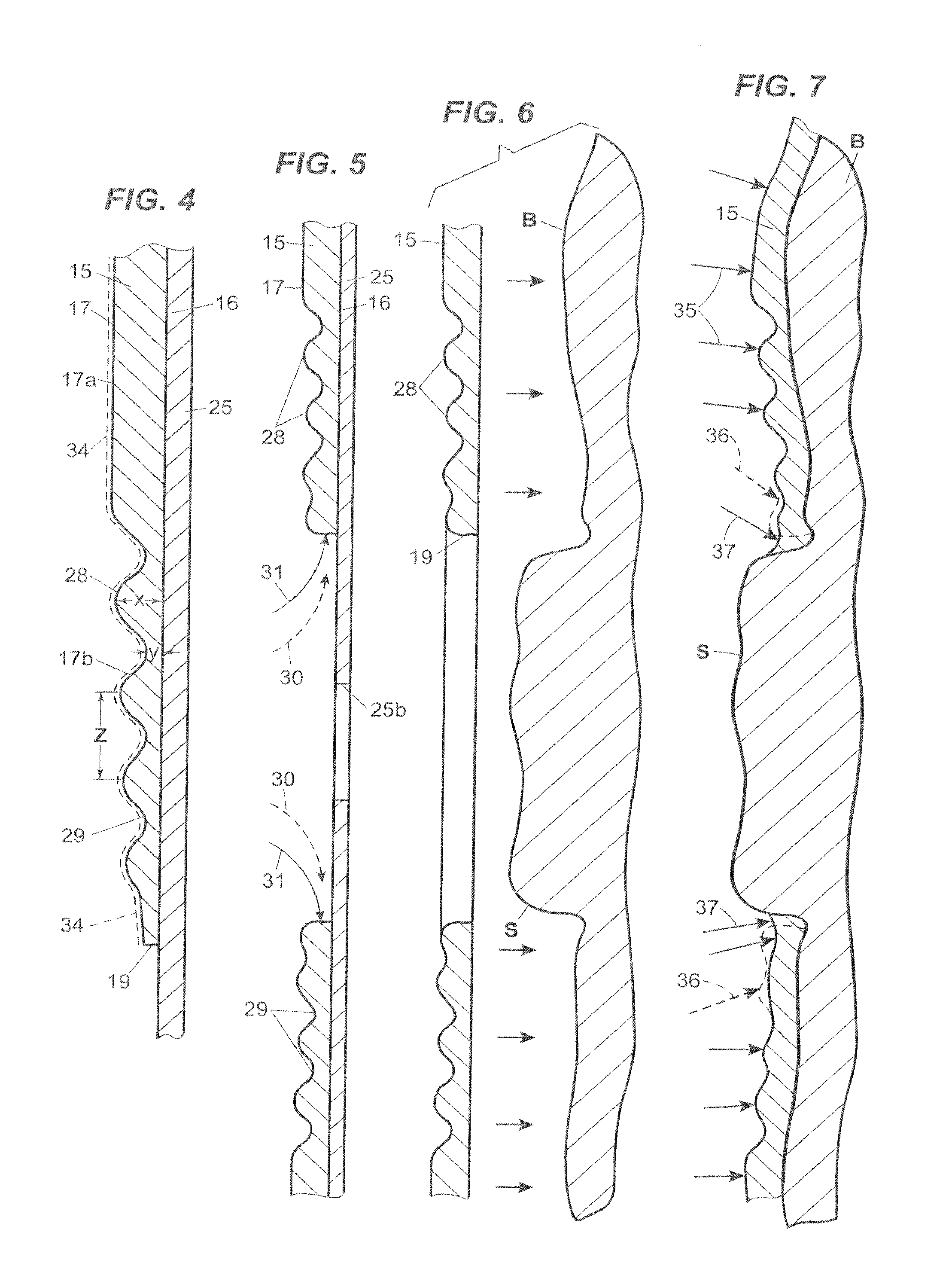Ostomy faceplate having moldable adhesive wafer with diminishing surface undulations
a moldable adhesive and ostomy face technology, applied in the field of moldable adhesive wafers with diminishing surface undulations, can solve the problems of introducing significant elasticity into the adhesive, affecting the formation of fingers, and lacking cohesive strength of putty-like moldable adhesives, etc., to achieve low strain recovery, avoid elastic recovery and memory, and easy to form with the fingers
- Summary
- Abstract
- Description
- Claims
- Application Information
AI Technical Summary
Benefits of technology
Problems solved by technology
Method used
Image
Examples
example 1
[0025]An illustrative moldable skin barrier composition for use in this invention may be prepared using 55 wt. / % 36,000 molecular weight PIB, 4 wt. / % fibrillated polyethylene fiber (surface area of 8 m2 / g, fibril length about 0.55 to 0.85 mm, fibril diameter about 15μ), 13.7 wt. / % pectin, and 27.3 wt. / % sodium CMC. The composition may be prepared using a Brabender Type REE6 mixer at 50° C. The ingredients may be added in the order given above, and after the addition of each ingredient, mixing is allowed to proceed until the mixture is homogeneous. After the final mixing period, the mixture is removed from the mixer and allowed to equilibrate at room conditions.
example 2
[0026]Three sample disks A-C of moldable skin barrier compositions made in accordance with the process set forth in Example 1 were analyzed for Strain Recovery on a TA Instruments AR2000 Rotational Rheometer with the following test parameters:
[0027]Gap: 1000 μm;
[0028]Test Mode: Viscometry;
[0029]Fixture: 25 mm Parallel Plate, MELT;
[0030]Temperature: 32° C.
[0031]Each sample disk was placed on the rotational rheometer fixture that was preheated to the specified temperature. The upper portion of the fixture was lowered to the specified gap, the sample was trimmed, and the analysis was run.
[0032]A shear deformation of 15% and 5% (total 20%) was applied in two steps in order to avoid overshoot in deformation. The overshoot of the deformation did not exceed 22%. The total time of the deformation was less than 90 seconds. The stress was removed and the remaining elastic forces recovered some of the applied deformation. The resulting recovery of the deformation was measured after an elapse o...
PUM
 Login to View More
Login to View More Abstract
Description
Claims
Application Information
 Login to View More
Login to View More - R&D
- Intellectual Property
- Life Sciences
- Materials
- Tech Scout
- Unparalleled Data Quality
- Higher Quality Content
- 60% Fewer Hallucinations
Browse by: Latest US Patents, China's latest patents, Technical Efficacy Thesaurus, Application Domain, Technology Topic, Popular Technical Reports.
© 2025 PatSnap. All rights reserved.Legal|Privacy policy|Modern Slavery Act Transparency Statement|Sitemap|About US| Contact US: help@patsnap.com



